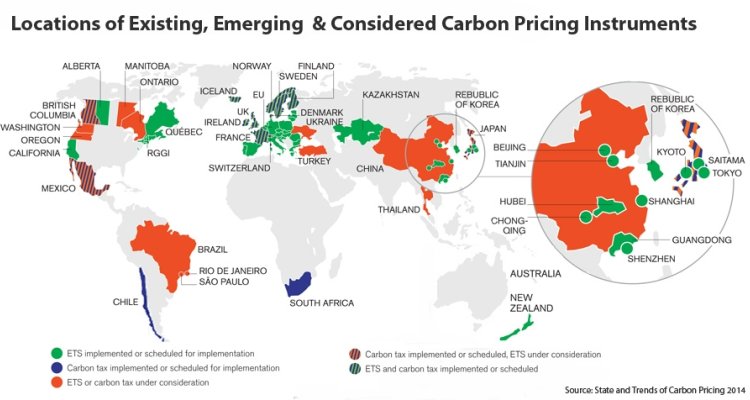
News
Carbon markets at city, national and supranational level: solutions or new problems?
The negotiations in Paris will hopefully yield some solid commitments in terms of emission targets. The question then becomes: how to reach those targets? One of the ways is to increase the price of emitting greenhouse gases.
The Kyoto protocol established some concrete market-based solutions to facilitate this, such as international emissions trading, the Clean Development Mechanism (CDM) and Joint Implementation. Whether or not these were a ‘success’ is highly contested and depends very much on which perspective you take (flows of finance, clean technology transfers, equity and social justice, etc). Nevertheless, this development did trigger a global interest in such mechanisms. The EU Emissisons Trading Scheme (ETS) is one of the oldest and most prominent ones, but there are now ETS in 35 countries across 4 continents (www.icapcarbonaction.com), at city, provincial, national and supranational (regional) scale. And there are likely to be many more in the future.
The Paris agreement is not likely to produce a very clear outcome on market mechanisms, like the one in the Kyoto Protocol. However, already a Carbon Pricing Leadership coalition was established and there are proposals to include a “mechanism to support sustainable development”. The latter hints towards a possible revival of the CDM or another type of ‘new’ market mechanism. Regardless of the outcome, the development of ETS and other market-based mechanisms will continue and will play a major role in ‘putting a price on carbon’ and therefore be increasingly important in global environmental governance.
The Environmental Policy group is engaged in various research projects related to carbon markets and mechanisms. For example, we study the ongoing experiments with market mechanisms at various scales in Southeast Asia. Herein, we focus specifically on the role of cities and whether and how carbon markets can be linked to the many ‘low-carbon city’ initiatives in this region. Recently, a PhD student started to work on monitoring, reporting and verification (MRV) of climate actions in Indonesia. Finally, ENP hosted a visiting researcher this year who studies the role of carbon markets in China. For us, it is important to understand how such policy instruments function in practice, especially in emerging and developing countries. Moreover, there are many important unanswered questions about how participatory they are, how these instruments interact with other sectors and policies and, ultimately, what difference they can make to reduce global warming and contribute to sustainable development.